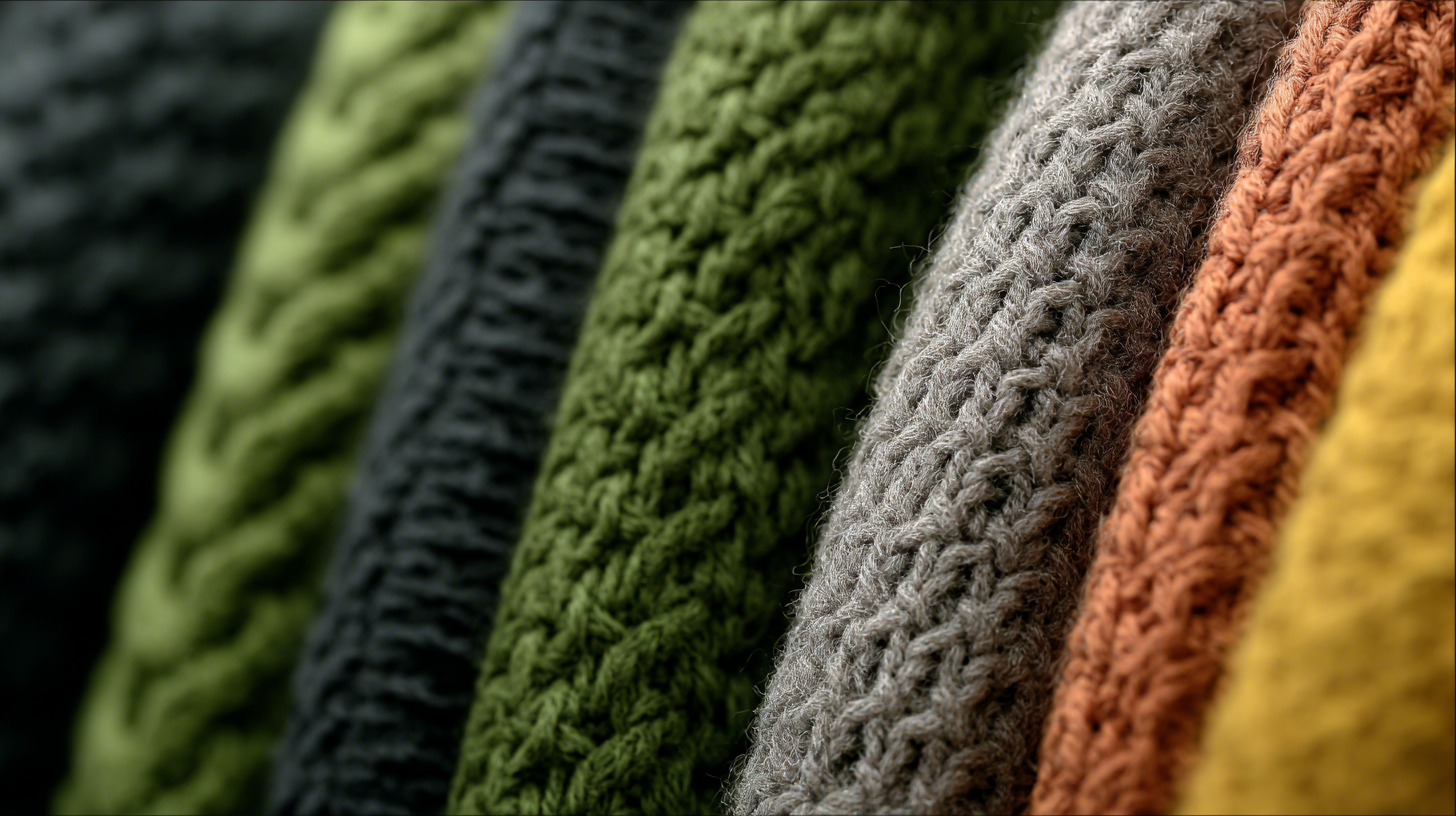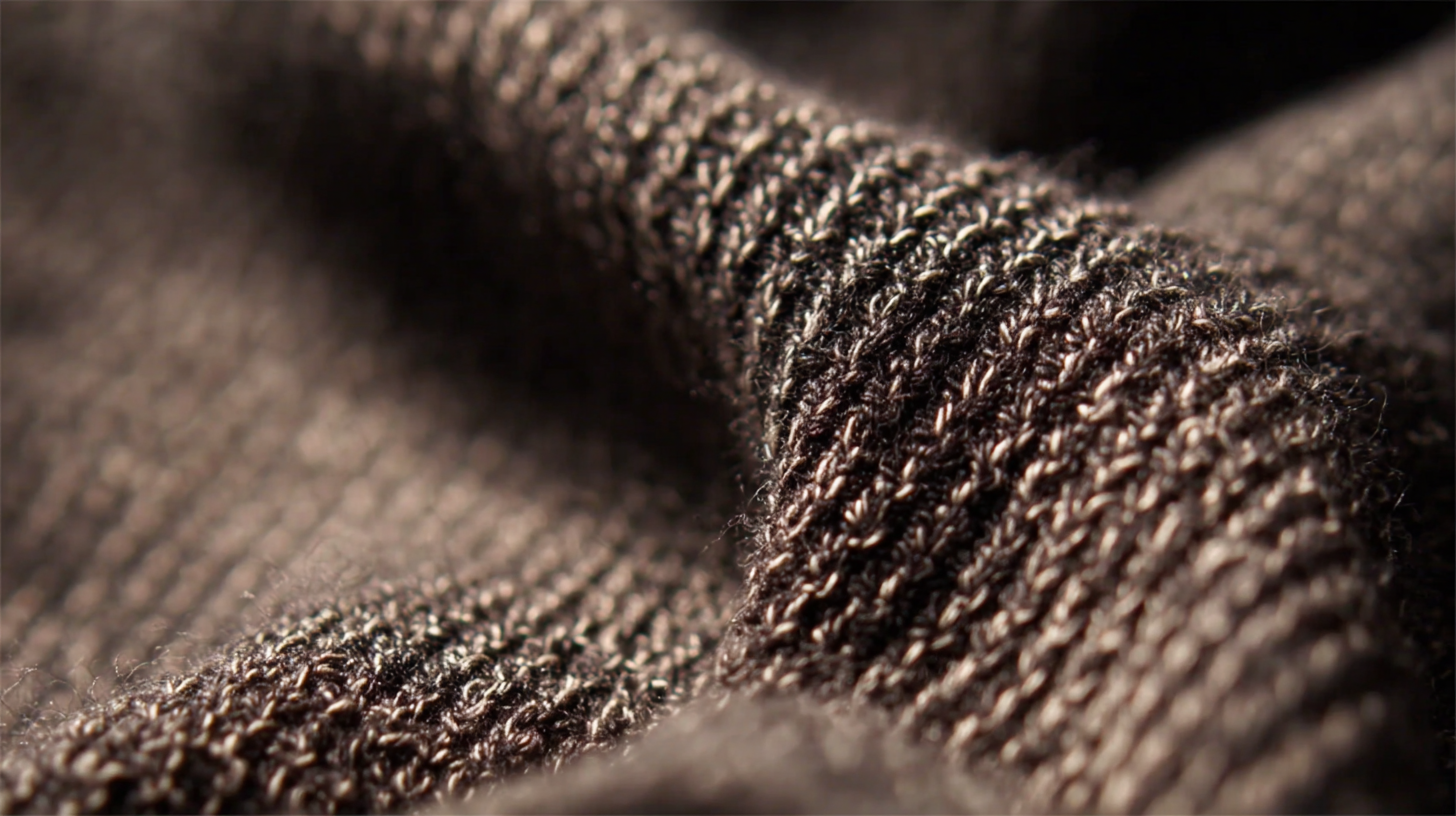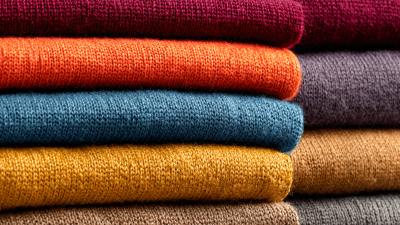The growing awareness of sustainability in the fashion industry has prompted designers and consumers alike to seek eco-friendly materials that do not compromise on style or comfort. Among these materials, Cotton Knitted Fabric stands out for its remarkable versatility and numerous environmental benefits. As a natural fiber, cotton is biodegradable, renewable, and often produced through sustainable farming practices, making it a preferred choice for brands committed to reducing their environmental footprint. The unique properties of Cotton Knitted Fabric, such as its softness, breathability, and stretchability, allow for the creation of diverse garments that cater to various fashion needs, from casual wear to high-end collections. This exploration delves into the innovative applications of Cotton Knitted Fabric in sustainable fashion, highlighting how it is shaping the future of the industry with responsible practices and stylish designs.

The environmental impact of cotton production in the fashion industry is becoming increasingly critical as the demand for sustainable fashion grows. While cotton is a natural fiber that supports millions of livelihoods globally, its traditional cultivation methods often lead to severe ecological consequences. The UN Environment Programme highlights that the fashion industry is the second-largest consumer of water, with conventional cotton farming accounting for a significant percentage of this usage. Reports indicate that it can take over 7,000 liters of water to produce just one kilogram of cotton, contributing to water scarcity in many regions.
Moreover, the rise of fast fashion has exacerbated these issues, leading to a staggering amount of textile waste. The EU is taking steps to address this by implementing laws aimed at promoting sustainable textile consumption, yet the challenge remains immense. As brands shift away from sustainable cotton initiatives, there is a pressing need for innovative solutions, such as the adoption of organic and recycled cotton, which could mitigate some of the environmental damage. By prioritizing lower-impact fabrics and responsible production practices, the fashion industry can work towards a more sustainable future without sacrificing style or affordability.

The recycling of cotton knitted fabric is gaining traction as a promising approach in the realm of sustainable fashion. Traditional recycling methods often struggle with maintaining the quality of the fiber, leading to subpar end products. However, innovative techniques are emerging that enhance the recycling process, allowing for the recovery of high-quality cotton fibers. By utilizing advanced mechanical and chemical recycling methods, manufacturers can break down cotton knitted fabric into its raw components, enabling the production of new textile products without compromising quality.
Furthermore, the integration of circular fashion principles is revolutionizing the way cotton knitted fabrics are viewed and utilized. Initiatives that encourage collection and recycling of used garments are being implemented, promoting a zero-waste approach. In addition, brands are exploring collaborations with research institutions to develop biotechnological solutions that facilitate the breakdown of cotton fibers more efficiently. By innovating and investing in these sustainable practices, the fashion industry can significantly reduce its ecological footprint, making cotton knitted fabrics not only a fashionable choice but also an environmentally responsible one.
Consumer demand for sustainable cotton knitted products is at the forefront of the textile market's evolution. As more consumers prioritize environmental responsibility, brands are increasingly turning to cotton knitted fabrics that offer versatility and sustainability. This growing trend is not only about aesthetics but also about ensuring ethical production methods and sourcing. The market for cotton knitted textiles is expected to benefit from heightened consumer awareness surrounding the ecological impact of the fashion industry, pushing brands to adopt more sustainable practices.
Additionally, the broader knitwear market is projected to experience significant growth, with a valuation expected to rise from $996.79 billion in 2025 to an impressive $2.48 trillion by 2033. This upward trend is being driven by innovations in sustainable materials, including organic cotton and recycled fibers, which are becoming essential in appealing to the conscious consumer. The integration of these sustainable practices not only helps brands meet current market demands but also positions them favorably for future trends, ensuring long-term viability in a rapidly evolving industry.
Cotton knitted fabric has long been a staple in the fashion industry, particularly in the realm of sustainable fashion. Its natural origin, breathability, and comfort make it an appealing choice for environmentally conscious consumers. When compared to synthetic alternatives, such as polyester or nylon, cotton offers significant benefits in terms of ecological impact. Cotton is a biodegradable material, breaking down naturally over time, whereas synthetics can persist in the environment for hundreds of years, contributing to pollution and waste.
Furthermore, the production of cotton knitted fabric typically involves fewer harmful chemicals than synthetic fibers, which often require extensive chemical processes that can be detrimental to both the environment and human health. Despite concerns surrounding water usage in cotton farming, many innovative practices are emerging to promote sustainable agricultural techniques that minimize water consumption and pesticides. The growing awareness about these issues has led to an increase in demand for organic cotton, further enhancing the fabric’s sustainability credentials compared to the energy-intensive manufacturing processes of synthetic fibers. Therefore, the comparative analysis highlights cotton knitted fabric as a versatile, sustainable option in the evolving landscape of fashion.
| Property | Cotton Knitted Fabric | Synthetic Alternatives |
|---|---|---|
| Breathability | Excellent | Moderate |
| Moisture Absorption | High | Low |
| Thermal Regulation | Good | Variable |
| Sustainability | Biodegradable | Non-biodegradable |
| Durability | Moderate | High |
| Cost | Moderate | Low |
The sustainable fashion landscape is evolving rapidly, with brands increasingly turning to cotton knitted fabrics for their eco-friendliness and versatility. According to the Organic Trade Association, the market for organic cotton is projected to reach $5 billion by 2025, driven by consumer demand for sustainable materials. Brands like Patagonia and Everlane are at the forefront, showcasing innovative uses of cotton knit, from lightweight sweaters to activewear. These companies not only prioritize organic sourcing but also incorporate transparency in their supply chains, thereby enhancing consumer trust and promoting a circular economy.
**Tips for Choosing Sustainable Cotton Knits:**
1. Look for certifications such as Global Organic Textile Standard (GOTS) or OEKO-TEX, which ensure the fabric is responsibly produced.
2. Consider brands that adopt a zero-waste policy or use recycled materials in their cotton knit products, thus minimizing landfill contributions.
Leading brands are not just focusing on the fabric’s sustainability; they are reimagining the entire production process. For instance, the Royal Institute of Chartered Surveyors notes sustainable practices can reduce carbon footprints by up to 50% when brands use local production methods and eco-friendly dyes. As cotton knitted fabrics continue to make waves in sustainable fashion, they exemplify how style and environmental responsibility can coexist beautifully.






